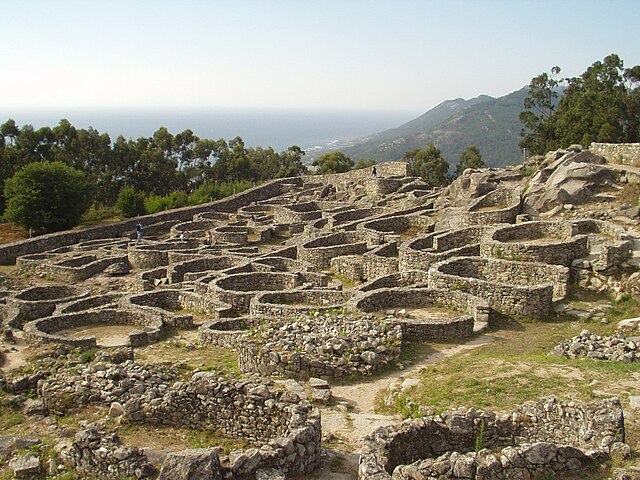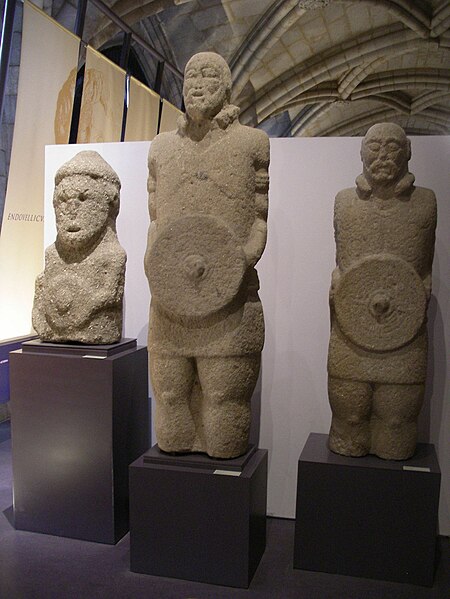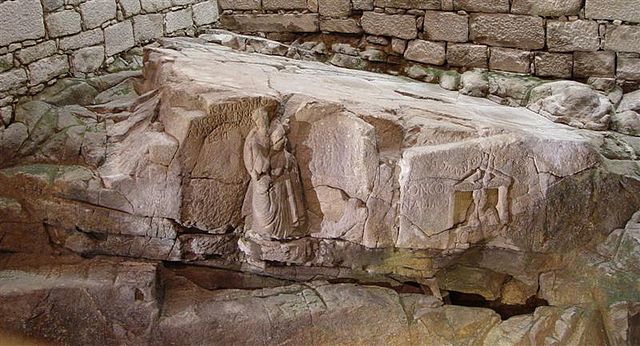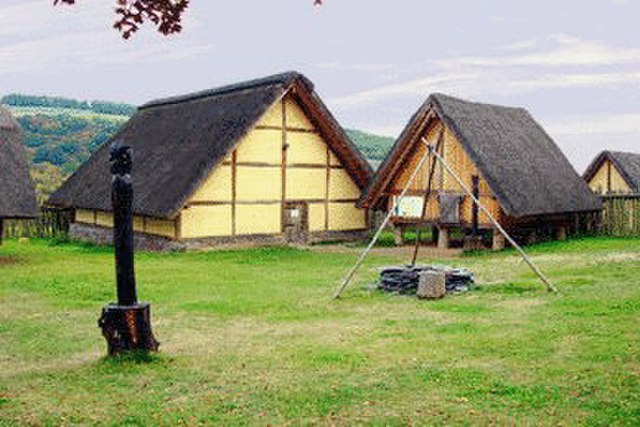The Gallaeci were a Celtic tribal complex who inhabited Gallaecia, the north-western corner of Iberia, a region roughly corresponding to what is now the Norte Region in northern Portugal, and the Spanish regions of Galicia, western Asturias and western León before and during the Roman period. They spoke a Q-Celtic language related to Northeastern Hispano-Celtic, called Gallaecian or Northwestern Hispano-Celtic. The region was annexed by the Romans in the time of Caesar Augustus during the Cantabrian Wars, a war which initiated the assimilation of the Gallaeci into Latin culture.
Partial view of the Castro de Santa Tegra, an oppidum from the 2nd century BC.
Granite Warrior statues are one of the most famous cultural outputs of the Gallaeci
The Fonte do Ídolo (Portuguese for Idol's Fountain), in Braga.
The Celts or Celtic peoples were a collection of Indo-European peoples in Europe and Anatolia, identified by their use of Celtic languages and other cultural similarities. Major Celtic groups included the Gauls; the Celtiberians and Gallaeci of Iberia; the Britons, Picts, and Gaels of Britain and Ireland; the Boii; and the Galatians. The relation between ethnicity, language and culture in the Celtic world is unclear and debated; for example over the ways in which the Iron Age people of Britain and Ireland should be called Celts. In current scholarship, 'Celt' primarily refers to 'speakers of Celtic languages' rather than to a single ethnic group.
The Dying Gaul, an ancient Roman statue
The La Tène–style ceremonial Agris Helmet, 350 BC, Angoulême city Museum in France
Reconstruction of the Hochdorf Chieftain's Grave, Stuttgart, Germany
Reconstruction of a late La Tène period settlement in Altburg near Bundenbach, Germany (first century BC)







